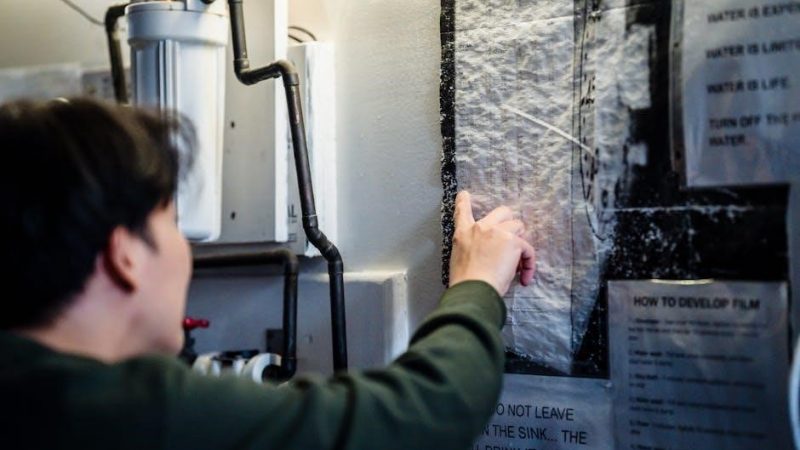post op extraction instructions printable
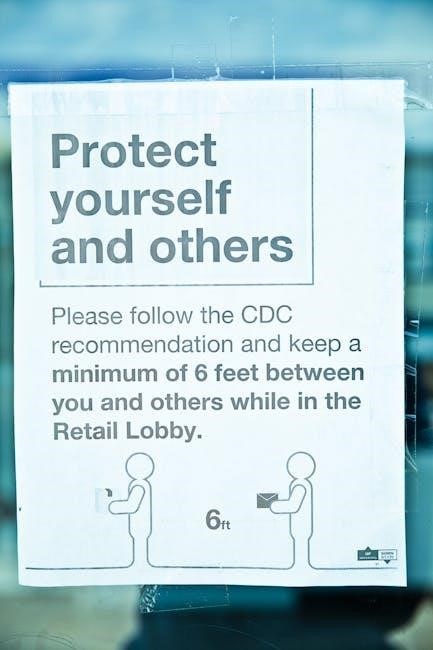
Proper post-operative care after tooth extraction is crucial for minimizing complications and promoting healing. These guidelines provide essential steps to ensure a smooth recovery process and prevent infections.
1.1 Overview of Tooth Extraction Aftercare
Tooth extraction aftercare is crucial for promoting healing, reducing discomfort, and preventing complications. Proper care ensures the extraction site heals efficiently, minimizing the risk of infection or prolonged recovery. Aftercare typically includes managing bleeding, controlling swelling, and maintaining oral hygiene. It also involves dietary adjustments and pain management strategies. Following these guidelines helps patients recover smoothly and protects the health of surrounding teeth and gums. Adhering to your dentist’s instructions is essential for optimal healing and a complication-free recovery process.
1.2 Importance of Following Instructions
Following post-op extraction instructions is vital to ensure proper healing, prevent complications, and avoid prolonged recovery. Neglecting these guidelines can lead to infection, dry socket, or improper healing, potentially requiring additional treatments. Adhering to your dentist’s advice minimizes risks, reduces discomfort, and supports the healing process. Compliance ensures a smoother recovery, allowing you to return to normal activities and maintain oral health effectively. Skipping steps can delay healing and overall well-being.

Immediate Post-Operative Care (First 24 Hours)
After tooth extraction, prioritize rest, avoid strenuous activities, and follow specific care routines to promote healing. Manage bleeding, control swelling, and minimize pain during this critical period.
2.1 Bleeding Management
Apply firm, steady pressure with gauze for 30-45 minutes to stop bleeding. If bleeding continues, replace the gauze or use a moistened tea bag. Avoid rinsing, spitting, or drinking through a straw to prevent dislodging the clot. Elevate your head slightly to reduce blood flow to the area. If bleeding persists or worsens, contact your dentist immediately. Follow these steps to promote clot formation and ensure proper healing during the first 24 hours after extraction.
2.2 Swelling and Pain Reduction
Apply an ice pack to the swollen area for 15-20 minutes at a time to reduce swelling. Take prescribed pain medication as directed by your dentist. Over-the-counter pain relievers, such as ibuprofen, can also help manage discomfort. Rest and avoid strenuous activities to minimize swelling. Elevating your head slightly while resting may reduce swelling. If pain or swelling worsens, contact your dentist for further guidance. These steps will help alleviate discomfort and promote healing during the first 24 hours.
2.3 Activity Restrictions
Avoid strenuous activities, bending, or heavy lifting for 24 hours after extraction. Resting helps prevent complications like bleeding or dislodging the blood clot. Refrain from exercise or sports to minimize swelling and promote healing. Smoking, drinking through a straw, or spitting forcefully should be avoided to protect the extraction site. Keep your head elevated while resting to reduce swelling. Limit physical exertion to ensure proper recovery and avoid delaying the healing process. Follow these guidelines to prevent unnecessary discomfort or complications.
Short-Term Recovery (2-3 Days Post-Extraction)
Focus on healing and minimizing discomfort. Stick to soft foods, avoid smoking, and gently rinse with saline. Light activities are okay, but rest when needed.
3.1 Diet Recommendations
During the short-term recovery period, focus on eating soft, non-irritating foods like yogurt, mashed potatoes, and soups; Avoid spicy, hot, or hard foods that could dislodge the blood clot or irritate the extraction site. Opt for a diet rich in nutrients to promote healing, such as scrambled eggs, smoothies, or soft-cooked vegetables. Drink plenty of water to stay hydrated, but avoid using straws. Cold foods and beverages can help reduce swelling and discomfort. Stick to bland flavors and avoid chewing near the extraction site.
3.2 Oral Hygiene Practices
Maintain gentle oral hygiene to promote healing and prevent complications. Avoid brushing directly over the extraction site for 24 hours. After 24 hours, use a soft-bristle toothbrush to clean surrounding teeth gently. Rinse with warm saltwater (1/2 teaspoon of salt in 8 ounces of water) 2-3 times daily to keep the area clean. Avoid aggressive rinsing or using mouthwash during the initial healing phase. Resume normal brushing gradually, ensuring not to disturb the extraction site. This helps prevent infection and supports proper recovery.
3.4 Managing Discomfort
After tooth extraction, discomfort can be managed with prescribed pain relievers or over-the-counter medications like ibuprofen. Apply ice packs to the affected area during the first 24 hours to reduce swelling. Stick to a soft-food diet initially to avoid irritating the extraction site. Rest and avoid strenuous activities to promote healing. If discomfort increases or persists, contact your dentist for further guidance. Proper pain management supports a smoother recovery process.

Long-Term Healing (Beyond 1 Week)
After one week, most patients notice significant improvement. Tissue begins to repair, and the extraction site starts forming new gum tissue. Continue monitoring healing progress.
4.1 Returning to Normal Activities
Most patients can resume normal activities within 7–10 days post-extraction. Gentle exercises and light work are usually tolerated, but avoid heavy lifting or strenuous tasks. Listen to your body and rest if discomfort arises. Avoid activities that could disrupt the healing site, such as bending or rigorous sports. Gradually reintroduce social activities, ensuring you continue to prioritize oral care and dietary precautions. Full recovery varies, but consistency in following post-op guidelines will support a smooth transition back to daily routines.
4.2 Resuming Regular Diet
After 1 week, most patients can gradually return to their regular diet, but caution is advised. Start with soft foods like scrambled eggs, yogurt, and mashed potatoes, then introduce firmer foods. Avoid chewing directly over the extraction site to prevent irritation. Hard or sharp foods, such as nuts or chips, should be avoided for 2–3 weeks. Hot foods should also be approached carefully to prevent discomfort. Gradually reintroduce your usual diet, ensuring healing remains on track. Full recovery typically allows normal eating within 2 weeks.
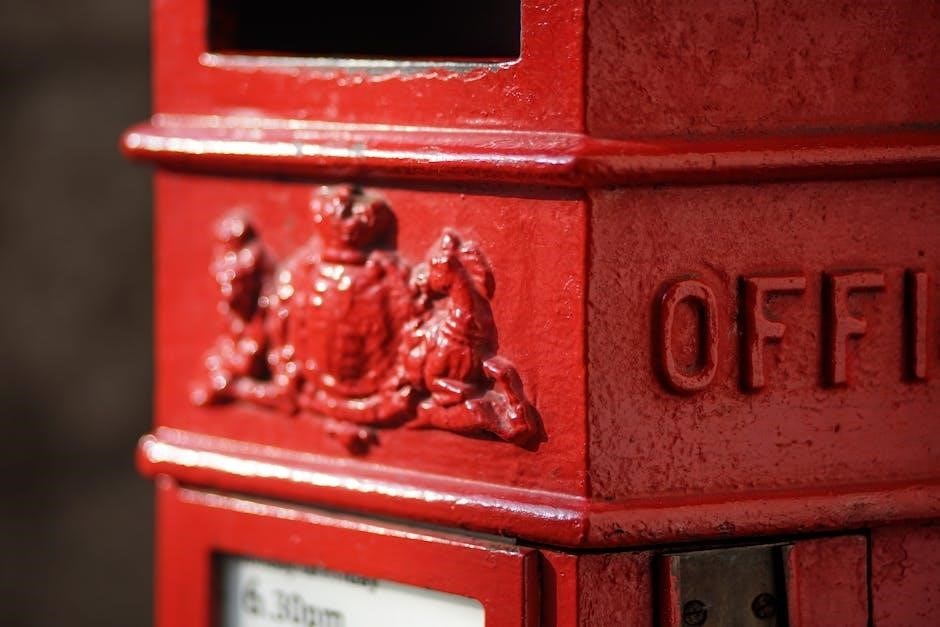
Pain Management Strategies
Proper pain management is crucial for a comfortable recovery. Use prescription medications as directed by your dentist and consider over-the-counter options for mild discomfort. Always follow instructions carefully to avoid complications and ensure proper healing. Monitor pain levels and adjust strategies as needed under professional guidance.
5.1 Prescription Medications
Prescription medications are often necessary for managing severe pain after tooth extraction. These may include opioids like hydrocodone or oxycodone, which are effective but should be used cautiously. Always follow the dosage instructions provided by your dentist and avoid exceeding the recommended amount. Be aware of potential side effects, such as drowsiness or nausea, and refrain from operating heavy machinery while taking these medications. Inform your dentist of any allergies or medications you’re currently taking to ensure safe use.
5.2 Over-the-Counter Options
Over-the-counter pain relievers like ibuprofen (Advil, Motrin) and naproxen (Aleve) are effective for managing moderate post-extraction pain and inflammation. Acetaminophen (Tylenol) is another option, especially for those who cannot take NSAIDs. Always follow the recommended dosage on the label or as advised by your dentist. These medications are readily available and can be used as a first-line defense against discomfort. However, if pain persists or worsens, consult your dentist for stronger prescription options.

Dietary Considerations
Focus on soft, non-irritating foods like yogurt, mashed potatoes, and scrambled eggs. Avoid hard, crunchy, or spicy foods that may disrupt healing or irritate the extraction site.
6.1 Foods to Avoid
After tooth extraction, it’s crucial to avoid certain foods to promote healing and prevent complications. Hard, crunchy, or chewy foods like nuts, chips, and tough meats can dislodge the blood clot. Spicy or acidic foods may irritate the extraction site. Avoid hot foods or drinks for the first 24 hours, as they can increase swelling. Sticky foods like caramel or gum can also disrupt the healing process. Opt for soft, bland, and lukewarm foods to ensure a smooth recovery.
- Avoid hard or crunchy foods (e.g., nuts, chips).
- Steer clear of spicy or acidic foods.
- Do not consume hot foods or drinks initially.
- Refrain from sticky foods like gum or caramel.
Choose soft, bland, and lukewarm options to protect the extraction site and promote healing.
6.2 Recommended Soft Foods
After tooth extraction, it’s crucial to eat soft, non-irritating foods to avoid discomfort and promote healing. Opt for foods like yogurt, scrambled eggs, mashed potatoes, and soft-cooked vegetables. Applesauce, bananas, and avocado are excellent choices due to their gentle texture. Soups, smoothies, and pureed meals are also ideal. Avoid hot foods initially, as they may irritate the extraction site. Choosing these soft foods helps minimize pain and ensures a smooth recovery process during the initial healing stages.
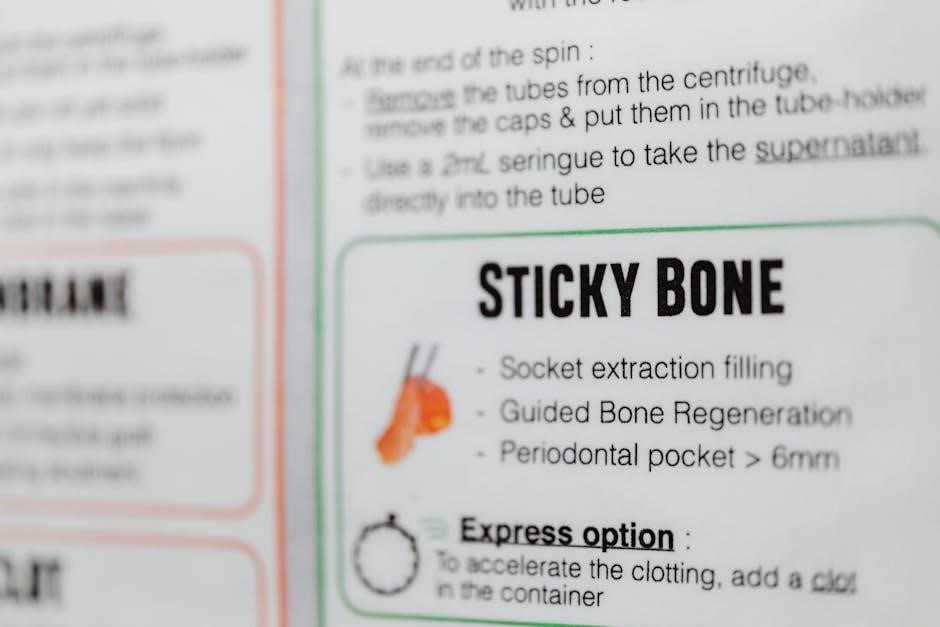
Oral Hygiene Practices
Maintaining proper oral hygiene after tooth extraction is crucial for healing. Gently clean teeth with a soft brush, avoiding the extraction site, and rinse with warm salt water to prevent infection and promote recovery.
7.1 Brushing Techniques
Resume gentle brushing 24 hours post-extraction, using a soft-bristled toothbrush. Avoid direct contact with the extraction site for 2-3 days; Gently clean surrounding teeth and gums to maintain oral hygiene. Use mild toothpaste and light strokes to prevent dislodging the blood clot. For sensitive areas, consider using a child-sized toothbrush for better control. Rinse with warm water or saltwater solution if brushing causes discomfort. Regular brushing helps prevent infection and promotes healing.
7.2 Rinsing and Mouthwashing
Proper rinsing and mouthwashing are crucial for maintaining oral hygiene after tooth extraction. Start with warm saltwater rinses (1/2 teaspoon salt in 8 ounces of water) 24 hours post-extraction, gently swishing around the mouth. Avoid vigorous rinsing to prevent dislodging the blood clot. Use an antimicrobial mouthwash if prescribed by your dentist. Continue rinsing 2-3 times daily to remove debris and promote healing. Be gentle to avoid irritating the extraction site. Avoid using straws or harsh mouthwashes that could disrupt the healing process.
- Rinse gently to avoid dislodging the clot.
- Use saltwater or prescribed mouthwash.
- Avoid harsh products or vigorous rinsing.
Following these steps helps prevent infection and supports recovery. Always follow your dentist’s specific instructions for rinsing and mouthwashing.

Potential Complications
Being aware of potential complications after tooth extraction is crucial for a smooth recovery. Infections, dry sockets, and delayed healing can occur if instructions aren’t followed. Monitor symptoms and seek professional help if issues arise.
8.1 Signs of Infection
Recognizing signs of infection after tooth extraction is crucial for timely intervention. Common indicators include increased pain beyond what medication manages, swelling that worsens or persists, redness around the extraction site, pus or discharge, and a bad taste in the mouth. Additionally, fever, chills, or swollen lymph nodes may signal an infection. If you experience these symptoms, contact your dentist immediately to prevent complications and ensure proper treatment.
8.2 Dry Socket Prevention
A dry socket occurs when the blood clot dislodges, exposing the bone and nerve endings. To prevent this, avoid smoking, vaping, or drinking through a straw for 24-48 hours. Refrain from rinsing vigorously or spitting forcefully. Stick to a soft food diet and avoid sucking actions. Gently rinse with salt water if recommended by your dentist. Avoid touching the extraction site with your tongue or fingers. Follow all post-op instructions carefully to promote healing and reduce the risk of complications.

Returning to Normal Activities
Most patients resume normal activities within 24-48 hours. Light tasks can begin in 2-3 days, with full recovery typically within 1-2 weeks. Avoid strenuous activities until healing is complete to prevent complications.
9.1 Timeline for Recovery
Recovery after tooth extraction typically follows a predictable timeline. The first 24 hours are crucial for clot formation and healing. By day 3-4, swelling and pain usually subside, and most patients can resume light activities. Within 7-10 days, the gum begins to heal, and stitches, if used, are removed. Full recovery, including bone healing, may take 2-4 weeks. It’s essential to follow post-op instructions to ensure proper healing and avoid complications.
- Day 1-2: Rest and monitor bleeding.
- Day 3-4: Resume light activities.
- Day 7-10: Gum healing progresses.
- 2-4 weeks: Full recovery expected.
9.2 Work and Social Activities
Patients can typically resume light work or social activities within 24-48 hours, depending on the procedure’s complexity. Avoid strenuous tasks for 3-5 days to prevent dislodging the blood clot. For social engagements, opt for soft foods and avoid smoking or drinking through straws. Notify colleagues or friends about your recovery to avoid misunderstandings. Prioritize rest and follow your dentist’s advice to ensure proper healing and minimize complications.
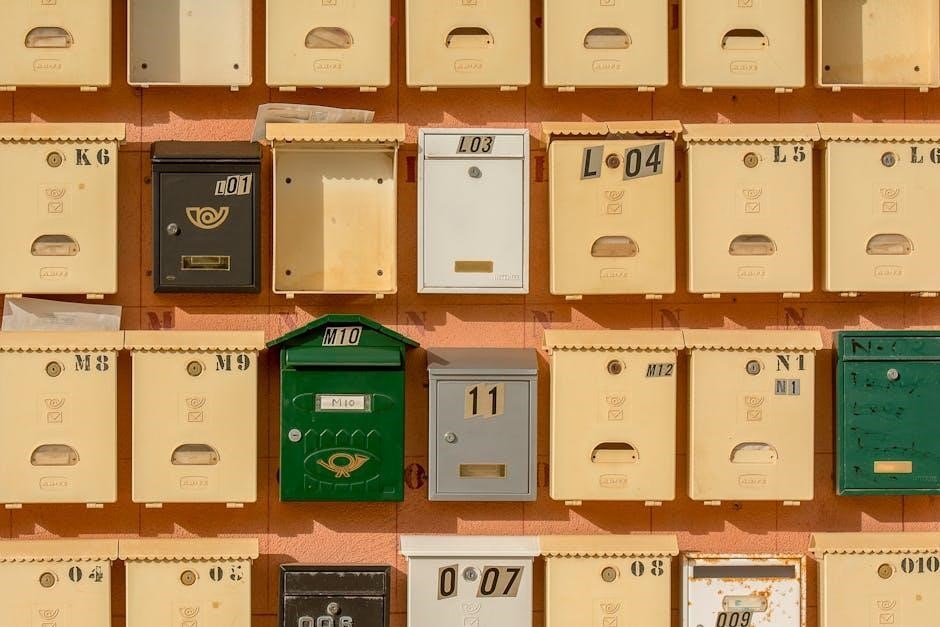
When to Contact Your Dentist
Monitor your healing progress and contact your dentist immediately if you experience severe pain, excessive bleeding, swelling, or signs of infection like fever or pus.
10.1 Emergency Symptoms
If you experience severe bleeding that doesn’t stop with pressure, contact your dentist immediately. Uncontrolled pain, even after medication, or swelling that worsens may indicate complications. A fever over 101.5°F or difficulty breathing requires urgent attention. If you notice excessive discharge, a foul odor, or a rash, seek help promptly. These symptoms could signal infection or other serious issues. Don’t delay—reach out to your dentist right away to prevent further complications and ensure proper treatment.
10.2 Follow-Up Appointments
Follow-up appointments are crucial to monitor healing progress and address any concerns. Typically scheduled within 7-10 days post-extraction, these visits allow your dentist to assess the healing site, remove sutures if necessary, and ensure no complications arise. Even if recovery seems smooth, attending follow-ups is essential for long-term oral health. Signs like increased pain, swelling, or unusual discharge may warrant an earlier appointment. Your dentist will provide personalized guidance based on your healing status.
Adherence to post-operative instructions ensures proper healing, minimizes complications, and promotes a smooth recovery. Prioritize rest, maintain oral hygiene, and monitor for signs of infection or dry sockets.
11.1 Essential Reminders
Following post-op extraction instructions is crucial for a smooth recovery. Avoid smoking, using straws, and vigorous rinsing for 24 hours. Stick to soft foods, keep the extraction site clean, and take prescribed medications as directed. Attend follow-up appointments to ensure proper healing. Monitor for signs of complications like increased pain or swelling. By adhering to these guidelines, you can minimize risks and promote optimal recovery. Remember, patience and adherence are key to avoiding setbacks.
11.2 Long-Term Care Tips
For optimal healing, maintain consistent oral hygiene and avoid smoking or tobacco products, as they can hinder recovery. Gently brush the area with a soft-bristled toothbrush and fluoride toothpaste, avoiding direct pressure on the extraction site. Attend follow-up appointments to monitor healing progress. Avoid chewing hard or sticky foods near the extraction site until fully healed. Consider wearing protective mouthguards if engaging in sports. Regular dental check-ups ensure long-term oral health and prevent complications. Prioritize a balanced diet rich in vitamins and minerals to support tissue repair and overall well-being.

About the Author
Dr. Jane Smith, a board-certified oral surgeon with over 15 years of experience, specializes in tooth extractions and post-operative care. Her expertise ensures comprehensive recovery guidance.
12.1 Expert Credentials
Dr. Jane Smith, a seasoned dentist with over 15 years of experience, holds a Doctor of Dental Surgery (DDS) degree from a prestigious university. She specializes in oral surgery and post-operative care, focusing on tooth extraction procedures and recovery. Dr. Smith is committed to providing evidence-based guidelines to ensure optimal healing and patient comfort. Her expertise includes creating detailed aftercare instructions to minimize complications and promote a smooth recovery process for patients undergoing dental extractions.
12.2 Contact Information
For any questions or concerns regarding post-op extraction care, contact your dental provider directly. Most offices provide 24/7 emergency contact options. Include phone numbers, email addresses, and website details for appointments or inquiries. Ensure to check office hours for routine calls. Many practices also offer downloadable resources or printable guides on their websites for patient convenience. Reach out promptly if you experience unusual symptoms or need clarification on recovery instructions.
